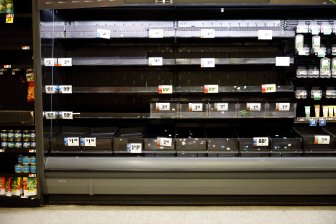The Coquihalla Highway (Highway 5) is set to reopen to regular vehicle traffic between Hope and Merritt Wednesday.
The planned reopening for the general public is much earlier than originally expected.
Road crews worked around the clock to get the Coquihalla Highway back for essential commercial vehicles and inter-city buses on Dec. 20 following the catastrophic flooding in November.
More than 100 kilometres of the essential roadway was destroyed and it was closed to regular vehicle traffic on Nov. 14.
Temporary repairs to the Coquihalla are in place for the reopening for the general public while the Ministry of Transportation plans permanent repairs to the damaged sections, the province said in a release.
There will be travel-pattern changes and reduced speed limits, with the trip between Hope and Merritt expected to take about 45 minutes longer than normal. Some rest areas are closed and the electric vehicle charging stations are not in operation.
There will also continue to be increased enforcement on the route to ensure drivers are obeying the traffic laws and driving to conditions.
More than 300 workers using 200 pieces of equipment moved more than 400,000 cubic metres of gravel, rock and other material to repair and reopen Highway 5 to commercial vehicle traffic in 35 days, the province said.

Meanwhile, weight restrictions will be lifted from Highway 99 between Pemberton and Lillooet on Wednesday.
However, drivers of large commercial vehicles are discouraged by the Ministry of Transportation from using this route because of the challenging terrain.
It is recommended that only experienced winter drivers travel this route.
The state of emergency due to the flooding will end at midnight Tuesday, Transportation Minister Rob Fleming said Wednesday.
Read more:
‘Nobody cares’: No ambulance, no food as residents remain stranded along B.C.’s Highway 1
Other highways remain closed, including Highway 1 through the Fraser Canyon.
North of communities such as Boothroyd and Boston Bar, the risk of avalanches stalled work on a temporary bridge at Jackass Mountain.
However, work has resumed at that site, Fleming said.
Several avalanches to the south also trapped the communities in between.
A single-lane temporary bridge has been installed at the Nicomen Bridge but the weather has been impacting work, Fleming said.
He added the ministry is confident the full stretch of road can reopen in some capacity by the end of January. However, it will contain single-lane sections, train crossings, ongoing avalanche control and a stretch where a pilot car will be used.
On Highway 8, 23 separate sites are still being addressed but work is progressing at about 10 of those sites, Fleming said.
Temporary repairs are expected to be in place so people can access their homes along that stretch by the spring, he added.
The province was first hit on Nov. 14 when a powerful atmospheric river delivered tropical moisture to southwestern B.C., resulting in unprecedented volumes of rain and triggering flooding and landslides.
While rainfall warnings and some highway travel advisories were in effect, few people were prepared for the scale of the ensuing disaster.
“Rainfall totals associated with the mid-November atmospheric river were astronomical. Some places received between 200 and 300 millimetres in 2.5 days; well above November’s average monthly total,” Environment Canada said.
“In two days, 40 daily rainfall records were eclipsed with totals experienced only once every 100 years.”
That Sunday and into Monday, a series of mud and landslides smashed all key highways leading in and out of the Lower Mainland, including Highway 1 on both sides of Hope, the Coquihalla Highway, Highway 7 west of Hope, Highway 99 between Pemberton and Lillooet and Highway 3 between Hope and Princeton.
Five people were killed in the Highway 99 landslide, and at least one person remains unaccounted for from the valley between Spences Bridge and Merritt, where the Coldwater River wiped out much of Highway 8.
In December, the Insurance Bureau of Canada estimated the storms and flooding to have caused $450 million in insured damage, based on preliminary data.
The Business Council of B.C. has also estimated the weather disaster will result in lost economic output for B.C. ranging from $250 million to $400 million.
Fleming said final costs are not yet available but early estimates are in the range of $170 million to $200 million for emergency repairs to restore temporary access and functionality. This does not include permanent rebuilds of the damaged areas.

– with files from Simon Little, and The Canadian Press
© 2022 Global News, a division of Corus Entertainment Inc.









More Stories
What Trudeau’s podcast appearances say about the Liberals’ next ballot box question
ANALYSIS | In videos and podcasts, Poilievre and Trudeau are eager to explain themselves — at length | CBC News
South Africa celebrates 30 years since end of apartheid, but discontent grows – National | Globalnews.ca